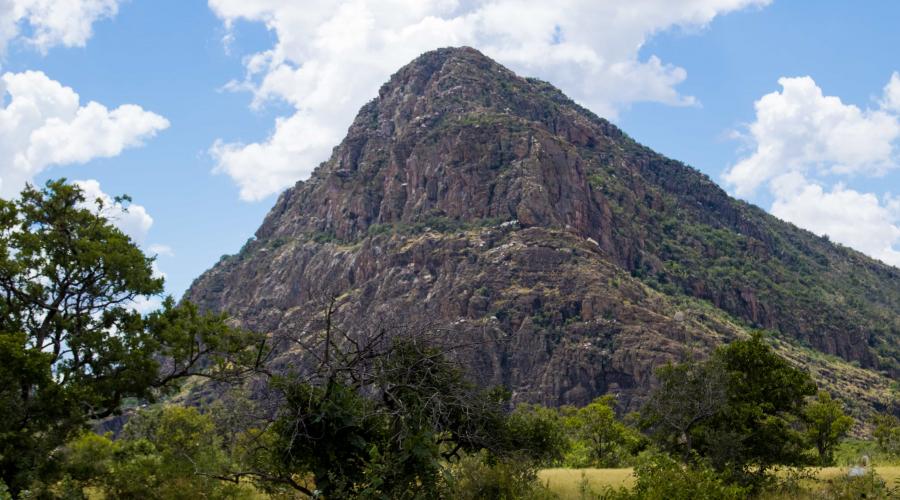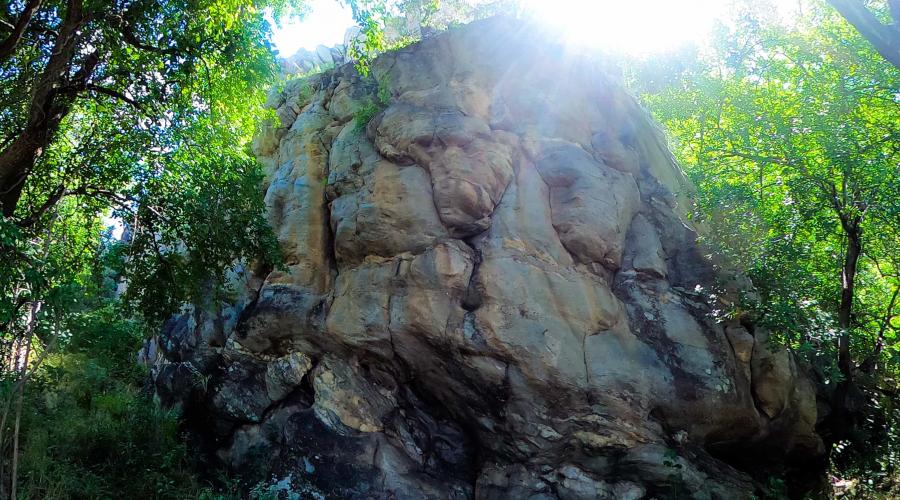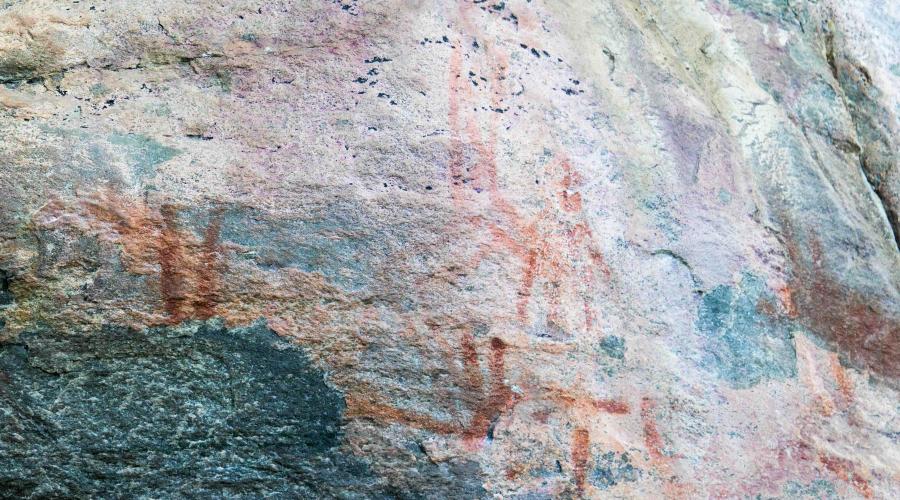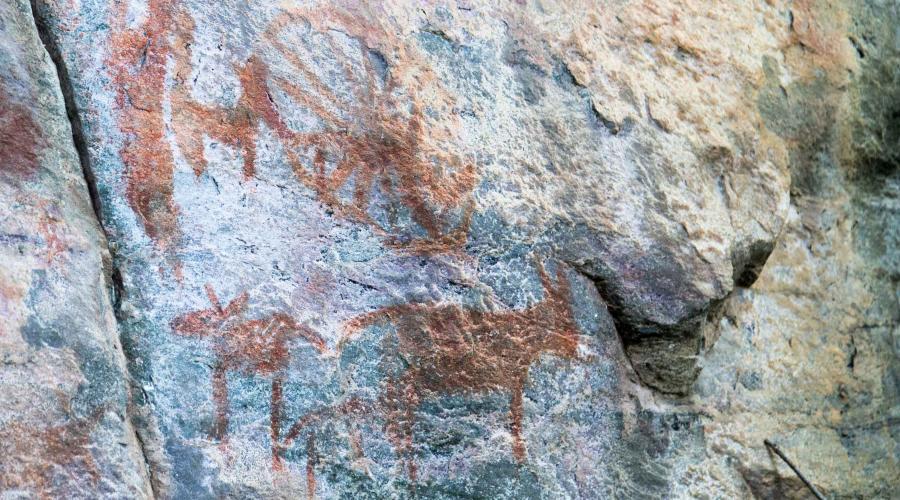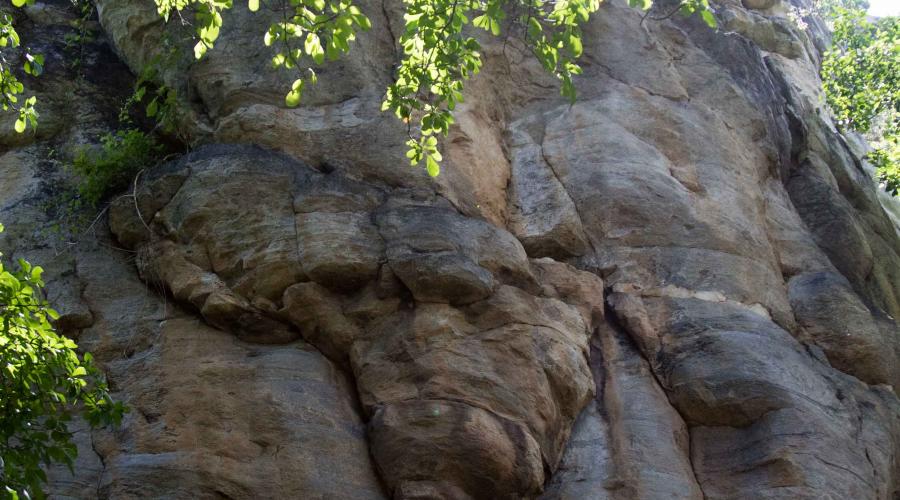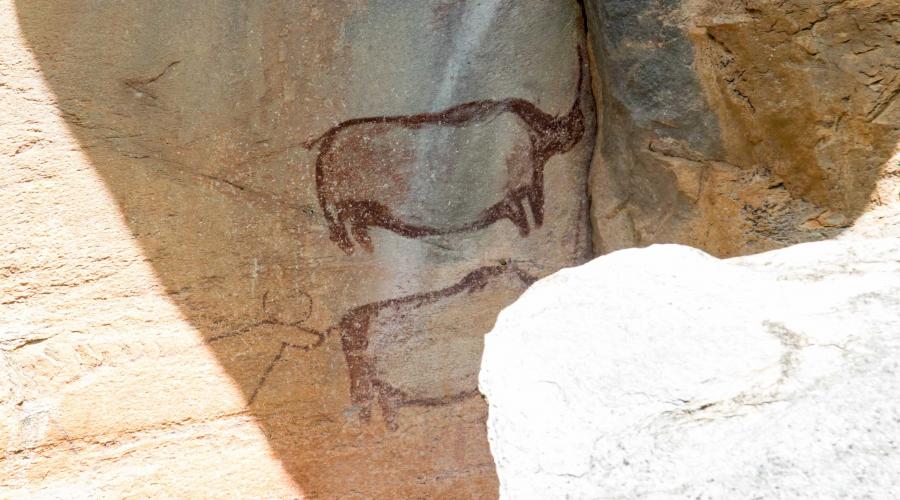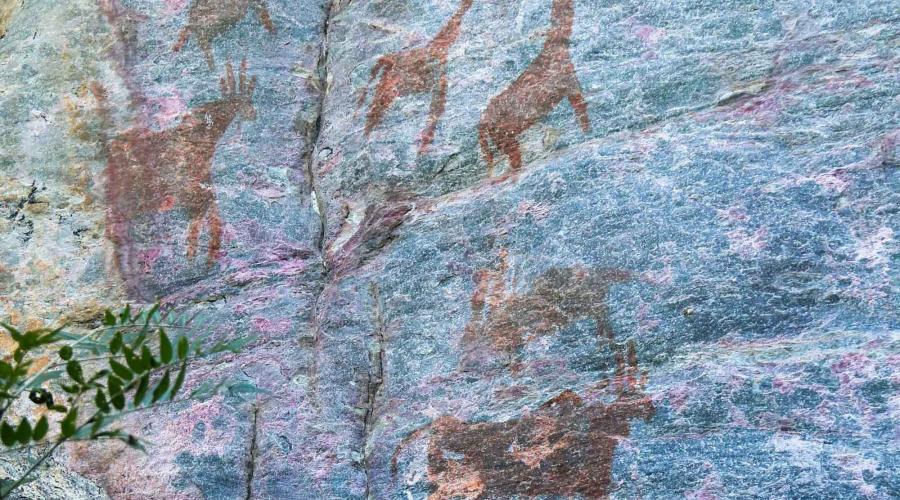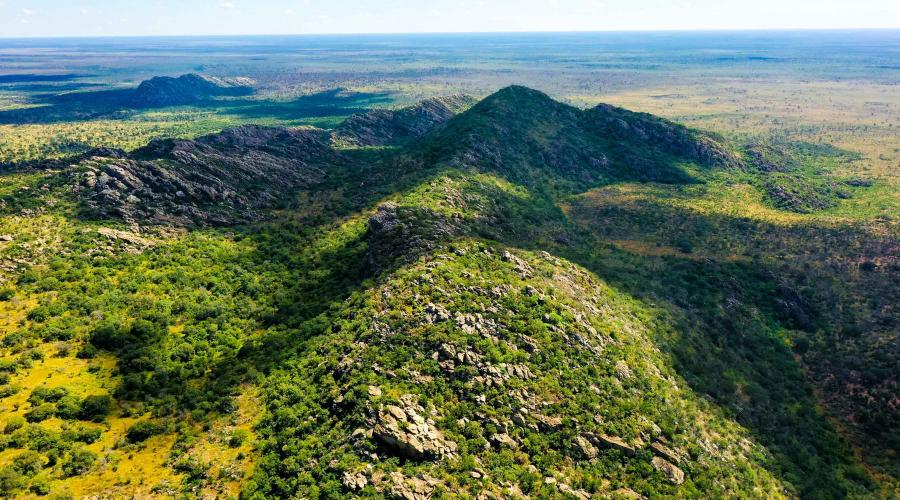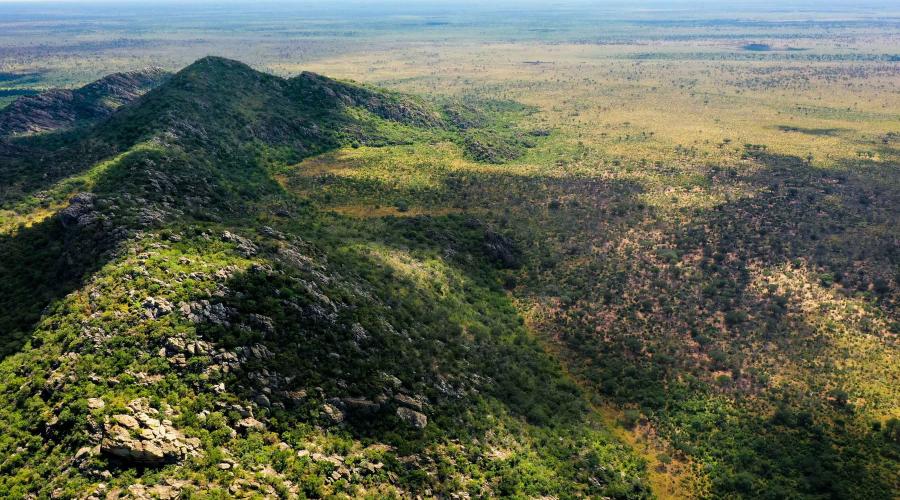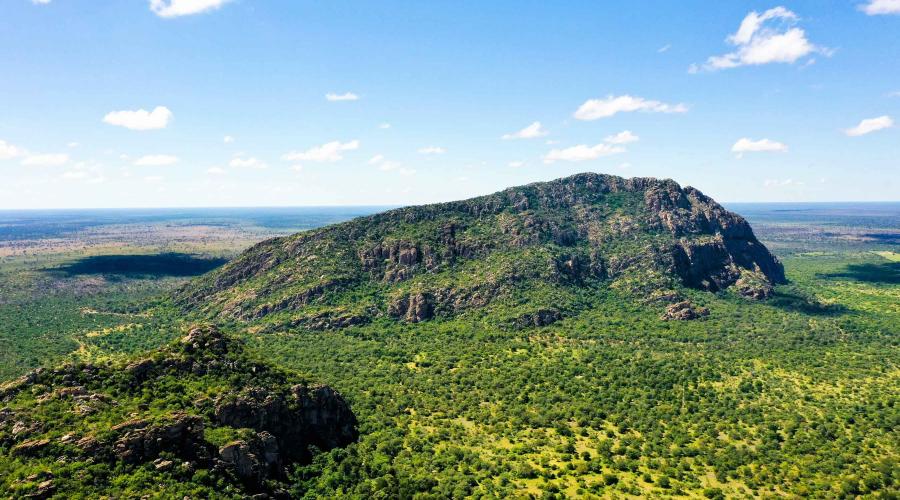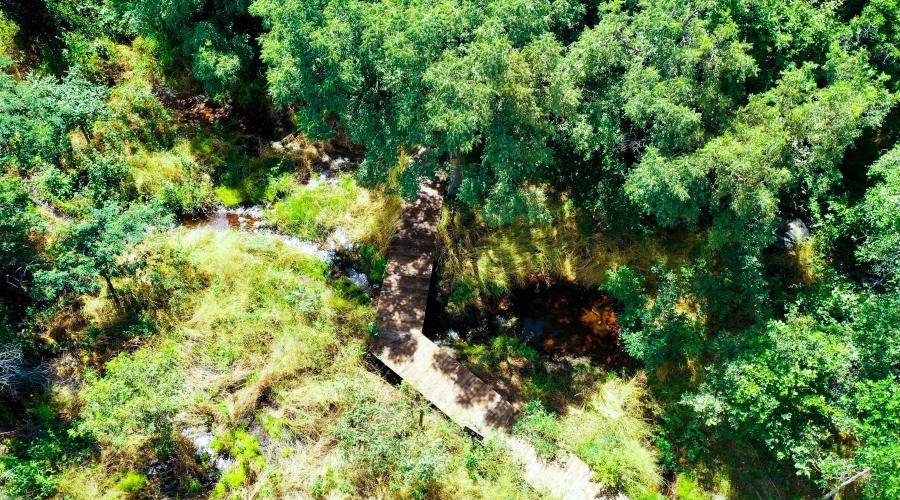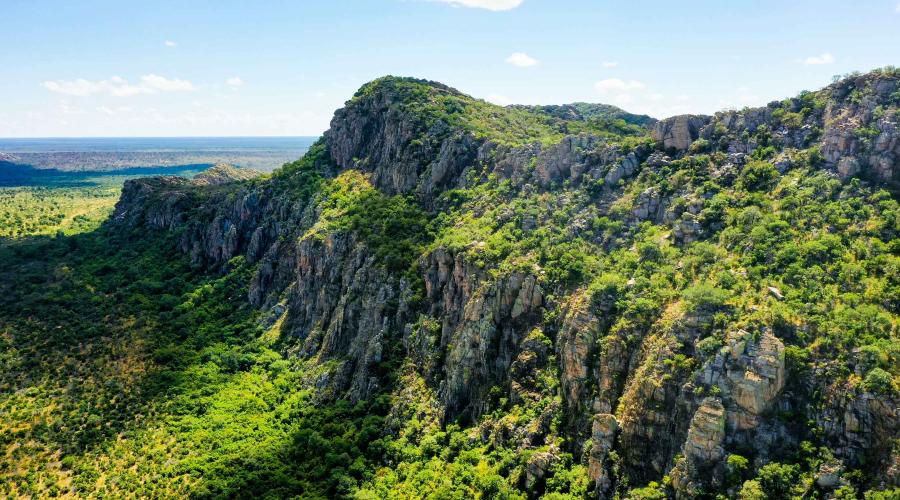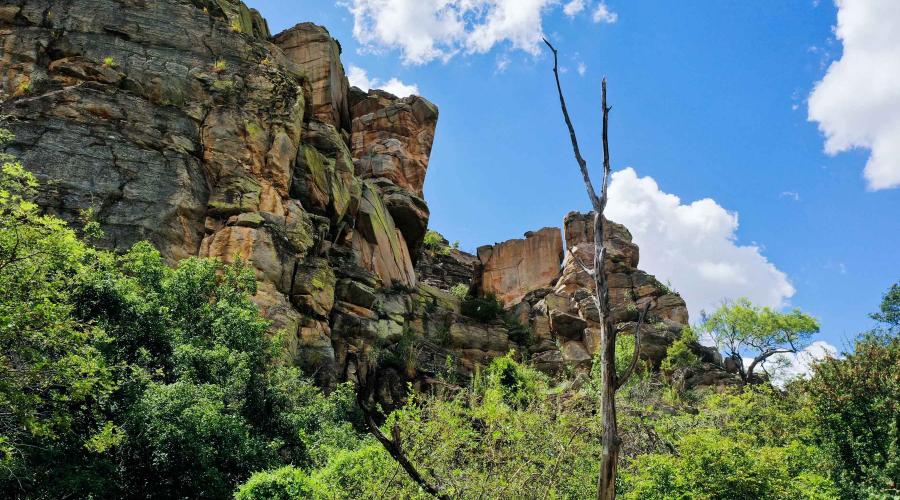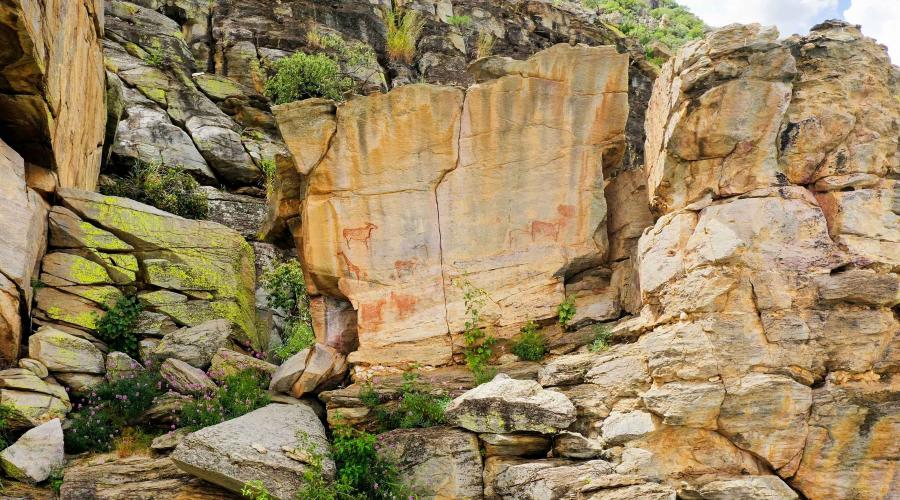Rising dramatically from the Kalahari scrub bush, the magnetic power of Tsodilo Hills captivates and mystifies. There is undeniable spiritualism about the Hills that immediately strikes any visitor. Tsodilo is a sacred, mystical place where the ancestral spirits of the San, the original inhabitants, and the Hambukushu, who have periodically occupied the hills for the past 200 years, dwell. Their ancestors performed rituals here to ask for assistance and rain. They also put paintings on the rock face, the meaning and symbolism of which remain a mystery to this today.
Exploring the three central Hills – Male, Female, and child – is a journey into antiquity. Archaeological research – ongoing for the past 30 years – estimates that Tsodilo has been inhabited for the past 100,000 years, making this one of the world's oldest historical sites. Pottery, iron, glass beads, shell beads, carved bone and stone tools date back over 90,000 years.
The Early Iron Age Site at Tsodilo, called Divuyu, dates back to between 700 and 900 AD. Findings at this site reveal that Bantu people have been living close to the hills for over 1,000 years, probably coming from central Africa. They were cattle farmers who settled on the plateau, trading copper jewellery from the Congo, seashells from the Atlantic, and glass beads from Asia, probably in exchange for specularite rock and furs. There was a great deal of interaction between different groups, and trade networks were extensive.
Excavations also reveal over 20 mines that extracted specularite – a glittery iron-oxide derivative that was used in early times as a cosmetic.
Rock paintings are nearly everywhere – representing thousands of years of human inhabitation. They are amongst the region's finest and most important. There are approximately 4 000 in all, comprising red finger paintings and geometrics. It is almost certain that most paintings were done by the San, and some were painted by the pastoral Khoe people who later settled in the area. The red paintings were done mainly in the first millennium AD.
Two of the most famous images are the rhino polychromes and the Eland panel, the latter situated on a soaring cliff overlooking the African wilderness. Indeed, many paintings' inaccessibility may be linked to their religious significance.
The fact that Tsodilo is geographically separated from all other rock art sites in Southern Africa adds to its aura of magic. The nearest known location is 250 kilometres away. What's more, the paintings at Tsodilo are generally unlike others in the southern African region – in both style and incidence of specific images. Many are isolated figures, and over half depict wild and domestic animals. There is a higher incidence of domestic animals than at other Southern Africa sites. Some are scenes, but few seem to tell a story. Many are outlined schematic designs and geometrical patterns.
The area includes many walking trails, including the Rhino Trail, Lion Trail and Cliff Trail, which are ideal for visitors to take in the landscape and view the rock paintings. Both San and Hambukushu live near the hills, and guides from their villages can be easily arranged.
Declared a UNESCO World Heritage Site in 2002, Tsodilo Hills includes a museum, administration buildings, a main campsite and ablutions, and three smaller un-serviced campsites nearby.
Activity highlights Tsodilo Hills include the following:
- Hiking
- Rock art viewing
- Tour of the Tsodilo Museum
- Culture-based activities such as traditional song and dance, with the nearby community, Basarwa (pre-arranged)



